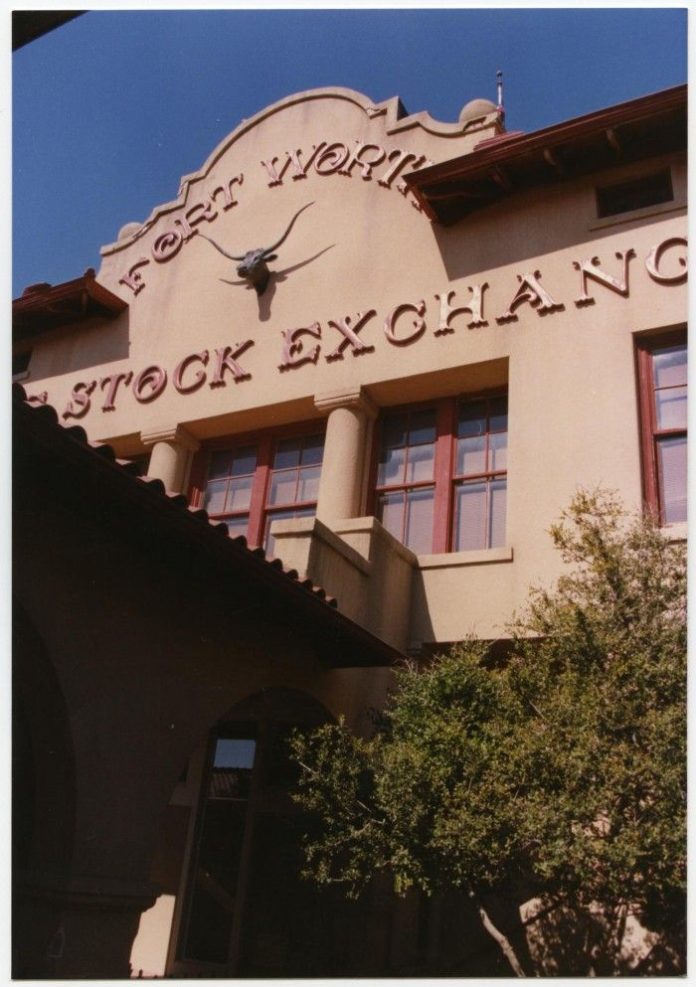The Fort Worth Stockyards has been added to the National Trust for Historic Preservation’s list of most endangered historic places.
The designation comes as plans take shape for redeveloping about 70 acres of the area with a $175 million product.
The National Trust for Historic Preservation named the Stockyards to its 2015 list of America’s 11 most endangered historic places. The list was made public late Tuesday night.
“San Antonio has the Alamo, Houston has the Astrodome and Fort Worth has its Stockyards,” Stephanie Meeks, president of the National Trust for Historic Preservation, said in a news release. “Just as cities throughout Texas and America have historic places that help define their identity, Fort Worth’s Stockyards represents a culture and history ingrained in the city’s character, and the cattle and livestock business that revolutionized American industry and appetites. As insensitive development threatens this historically significant place, we believe the local preservation community should be part of the city’s dialogue about the district’s future.”
According to the National Trust, in spite of its designation as a National Register Historic District, less than 10 percent of the buildings in Fort Worth’s Stockyards are protected from demolition through local designation. “The establishment of a local historic district would be the most effective solution to the threat of insensitive development,” the National Trust stated in its press release.
“Like [Historic Fort Worth’s] process for nominating endangered places, the National Trust accepts nominations from the public for its list,” said Jerre Tracy, executive director of Historic Fort Worth Inc. “HFW did nominate the stockyards, but others might have as well. The Trust staff and board can understand the deal the city has given Majestic, just as HFW’s board and staff can. Remember, the task force’s purpose is to develop design guidelines for new construction. Protecting and preserving the stockyards is not on the table.”
The Stockyards redevelopment project has been met with controversy since Hickman Investments announced last spring it had partnered with Los Angeles-based Majestic Realty on the plan. The City Council approved a tax incentive package for the project, which could bring hotels, residences, offices and livestock auctions to the district.
The Stockyards area boomed in the early 20th century when officials lured two large meatpacking firms, Swift and Armour, to the area. Fort Worth annexed what was then known as Niles City in 1922. In the 1980s, years after the meatpacking plants shut down, the area began to be marketed to tourists and visitors.
The proposed $175 million redevelopment includes much of the Hickman family’s Stockyards real estate holdings, including the Stockyards Station festival center, historic Mule Barns, cattle pens and the Swift-Armour “ruins” off Niles City Boulevard. The mixed-use project includes roughly 1 million square feet in new development.
The National Trust said that commissioning a historic resource survey of the Stockyards would “help Historic Fort Worth and local preservationists navigate the preservation issues and will aid communication with the city of Fort Worth and its chosen development partner, Majestic of California.” A survey would help local property owners in pursuing designations and taking advantage of local, state, and federal preservation financial incentives, the organization stated.
The National Trust is a privately funded, nonprofit organization that works to save America’s historic places, according to the group.
www.preservationnation.org
Here are the other sites on the trust’s 2015 list:
— A.G. Gaston Motel, Birmingham, Alabama, now vacant, which served as a “war room” for civil rights leaders.
— Carrollton Courthouse, New Orleans, now vacant, one of the area’s “most significant landmarks outside of the French Quarter,” according to the trust.
— Chautauqua Amphitheater, Chautauqua, New York. A plan to demolish and rebuild the aged amphitheater is controversial among preservationists.
— East Point Historic Civic Block, East Point, Georgia, a neglected downtown block.
— The Grand Canyon, which the trust characterized as threatened by “proposals ranging from tourist resorts to mining.”
— Little Havana, Miami, potentially threatened by zoning changes and lack of protection for historic buildings.
— Oak Flat, Superior, Arizona, a sacred tribal site, potentially threatened by mining.
— Old U.S. Mint, San Francisco, which the trust described as neglected.
— South Street Seaport, New York. The National Trust said the neighborhood would be altered by development proposals.
— The Factory, West Hollywood, California. A hotel and retail project is proposed for the site of the former gay nightclub.
The Associated Press and Martha Deller of Fort Worth Business contributed to this report.






